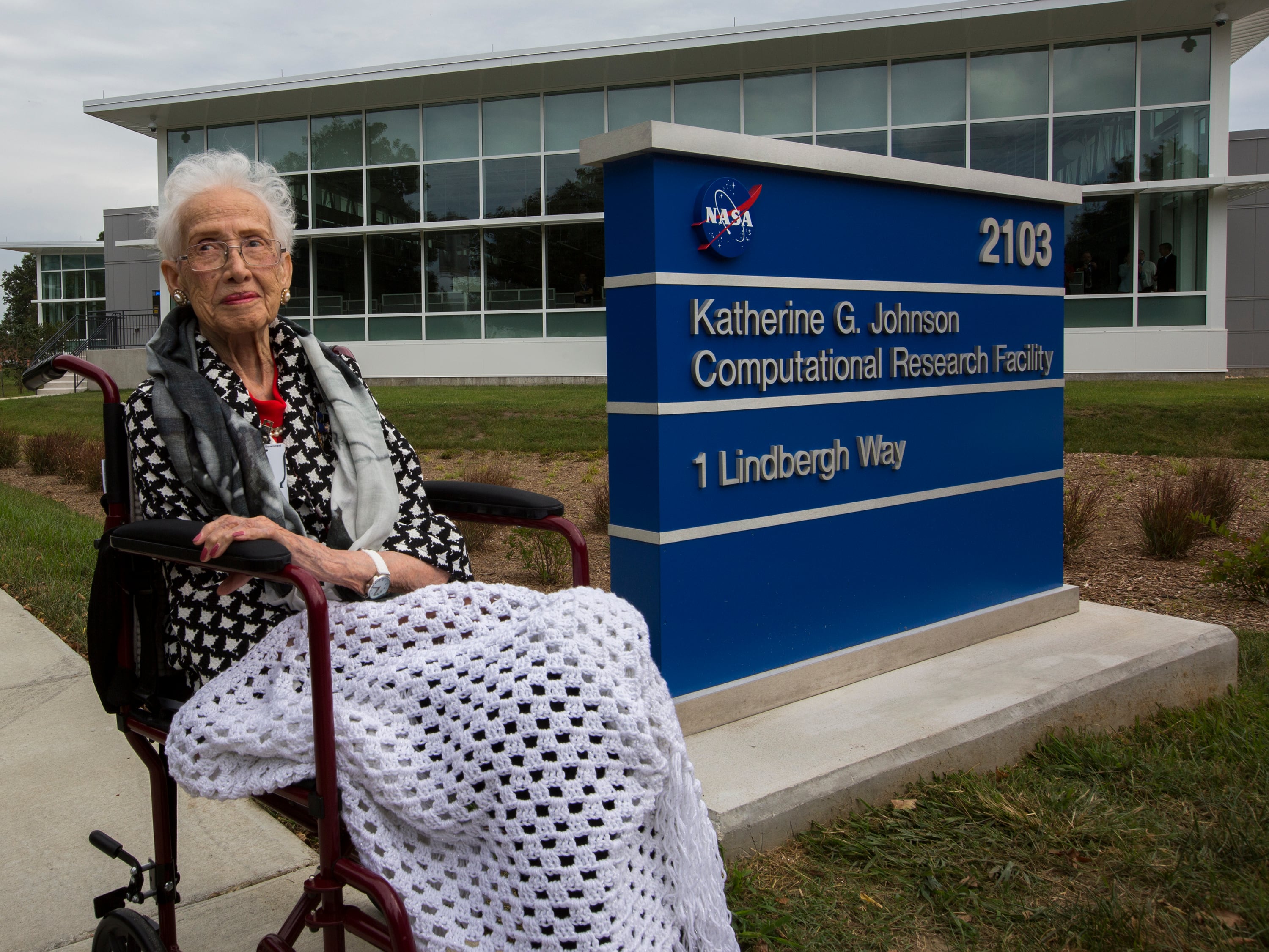NEWPORT NEWS, Va. (AP) — Back when “human computers” like Katherine Johnson calculated orbital trajectories and flight times for Mercury and Apollo astronauts by hand, some people still considered actual computers mere works in progress.
That’s why in 1962 a dubious John Glenn famously asked that Johnson run the numbers for his historic orbital flight to back up a NASA computer.
Now, NASA Langley Research Center is officially opening the Katherine G. Johnson Computational Research Facility — a $23 million consolidated computer center with so much firepower it’ll be used on brain-busters like running entry, descent and landing simulations for the 2020 Mars rover, performing computational fluid dynamics tests to simulate wind tunnels, and developing and modeling new polymers before ever trying them out in a lab.
“Across the board, everybody’s getting into (information technology) — the ability to simulate before you make or test,” said Erik Weiser, deputy director for center operations, on Sept. 19. “This will be a very powerful tool for us.”
Naming the building for Johnson was “very appropriate, since she was one of the original human computers,” said Loretta Kelemen, director of center operations.
Conceived in 2011 as part of the Hampton center’s revitalization plan to grow smaller but smarter, the facility first broke ground in 2014. It consolidates four of Langley’s data centers and 30 servers into one energy-efficient space.
The ribbon-cutting was set for Sept. 22, with 99-year-old Johnson, Gov. Terry McAuliffe, Sen. Mark Warner, “Hidden Figures” author and Hampton native Margot Lee Shetterly, local politicians and other dignitaries set to attend.
Just inside the entrance is celebrity photographer Annie Leibovitz’s portrait of Johnson, whose story was told in the book and movie “Hidden Figures,” taken at Fort Monroe last year. The entrance leads to a large open-concept office space with 84 cubicles set in long rows. The ceiling is an open architecture of joists, ductwork and pendant lights.
The cubicles are still bare, except for a handful already occupied by beta testers who have been helping project manager Matt Hinson kick the tires to identify any issues.
Their desks are personalized with paraphernalia such as a Yorkie-size model of an Imperial walker from “Star Wars,” TARDIS time machines from “Doctor Who,” ETs, Darth Vaders, glass skulls and posters proclaiming “Zombie Research Facility” and “Mars Explorers Wanted.”
Along the walls are private offices, team-up rooms, large and small conference rooms, a small break room and media center. There’s a restricted IT security office where experts can run forensics and protect NASA data from cyberattack.
Back in the restricted server room are about 100 racks, or black lockers, ready for computer servers that will run so hot it’ll take three big tanks packing 750 tons of coolant to keep them happy.
Next month, NASA will start filling up those racks into two divisions — for low-density computing, or more basic computer work, and high-density supercomputers for midrange computing. The idea is that, after those supercomputers develop their simulation codes, they’ll be sent to the big supercomputer at NASA Ames Research Center to run even more sophisticated code.
Like other new construction under Langley’s revitalization plan, this facility was built above the 500-year flood plain, said Weiser. Old buildings no longer needed are being demolished and returned to a natural state.
A few critical buildings, though, are still in the flood plain and can’t be moved or demolished, such as the compressor station that produces the air needed for the wind tunnels. Those buildings are being hardened against floods that scientists say will only get worse with climate change.
Two other at-risk facilities are the 20-foot vertical spin tunnel and 16-foot transonic dynamics tunnel located next door at Langley Air Force Base, said Weiser.
The vertical spin tunnel lies along the Back River, said Kelemen, and “floods almost every time we have a rain event.”
Langley hopes to build a new vertical spin tunnel on higher ground one day if it can get the funding.
As the new computational research facility springs to life, though, it likely signals a slow death for other wind tunnels as they become obsolete.
“It’s hard,” said Weiser. “Folks have spent their entire careers in the wind tunnels, so it’s hard to let go — and we won’t until we’re ready. Once we’re ready, the researchers understand.”
Still, he said, “there will always be a place for testing — be it wind tunnels, be it materials testing, entry, descent and landing. We’ll use the vertical wind tunnel that we’re trying to build to simulate things like that. . We’re going to try to drive to a place where we can answer more complex questions with computers that you may miss with a regular test. Or you use them in conjunction to get more complete answers.”





